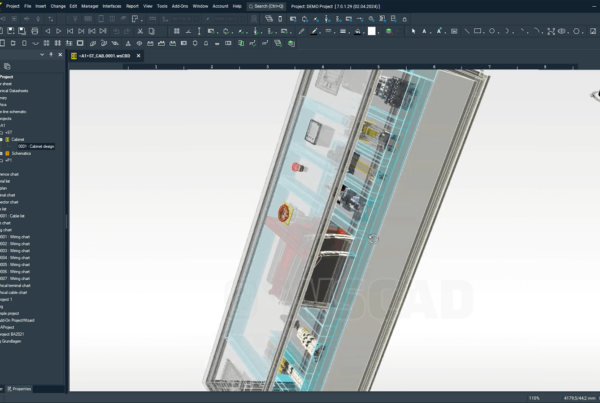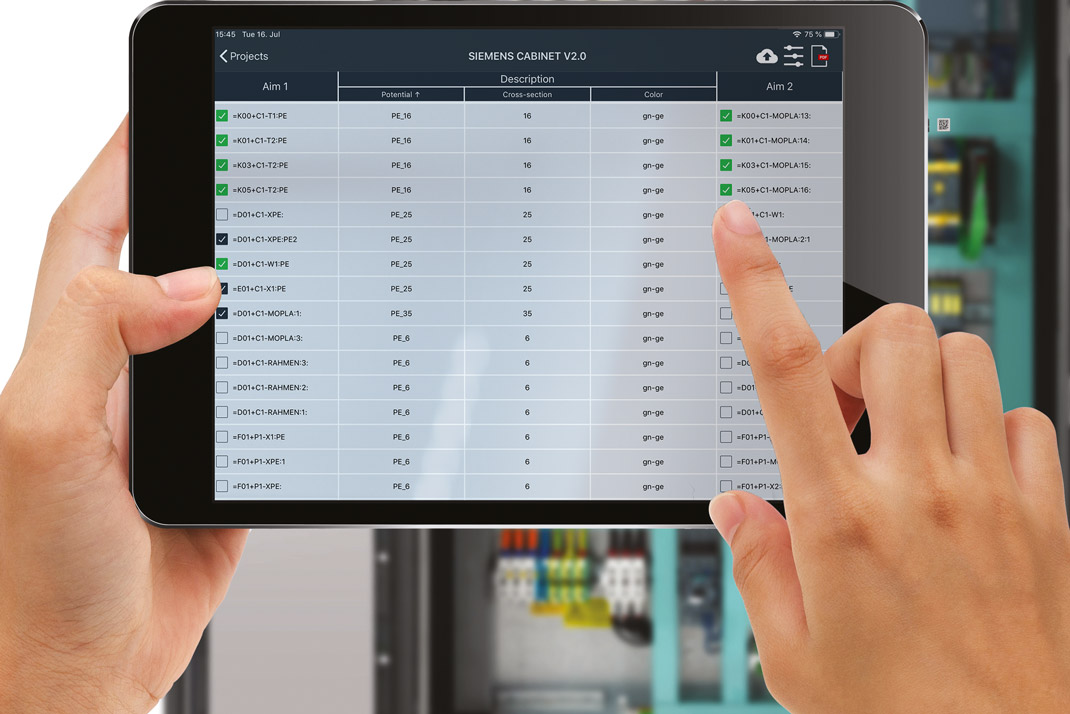
WSCAD Cabinet AR App
With the WSCAD Cabinet AR App (formerly called as WSCAD Augmented Reality App, WSCAD AR App), you can use your mobile device (tablet or smartphone) to retrieve information about the components of a control cabinet. Simply scan the WSCAD QR codes attached to the components with the camera of your mobile device.
If you have downloaded the cabinet-related WSCAD project onto your mobile device, you can display the components in the schematic (PDF file). In addition, you can mark the connections (wires) that you have already wired in the control cabinet in the wiring list of that control cabinet. All you need to do is export your project from the WSCAD SUITE and load it onto your mobile device via cloud storage.
The Cabinet AR App is compatible with WSCAD SUITE 2018 or higher. It can be downloaded for free from the Apple App Store for the iOS operating system and the Google Play Store for the Android operating system.
More detailed information on operation can be found in the online help of the Cabinet AR App: https://www.wscad.com/HELP/English/Cabinet_AR/index.htm
Scanning components
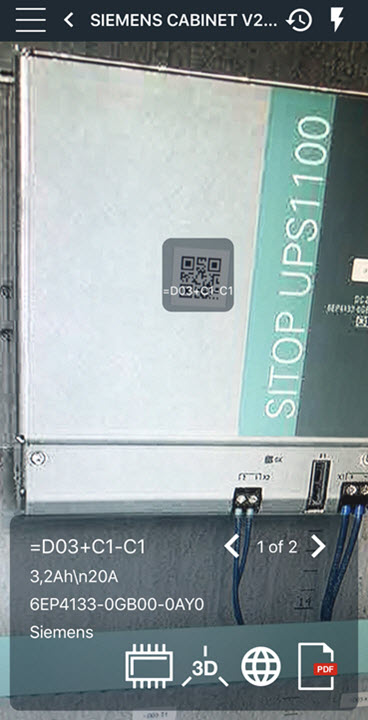
![]()
As soon as you have scanned the WSCAD QR code of a component within the Cabinet AR App with the scan symbol button, the available information about the component is displayed at the bottom of the screen, e.g., reference designation (= RD), function text, part number, manufacturer, connections.
The WSCAD QR codes of the components are created in the WSCAD SUITE via the label output (see last section of this documentation).
![]()
If you click on the Globe symbol button, you will receive additional information about the scanned component. Depending on the App setting, the data will be retrieved from the electrical CAD data portal wscaduniverse.com or the manufacturer’s site. To access the data of wscaduniverse.com you need to register once free of charge.
![]()
The 3D symbol button allows you to display the component in 3D. To do this, the 3D files must have been stored in the part data record of the component and exported together with the WSCAD project.
You can freely rotate, zoom in and zoom out the 3D model.
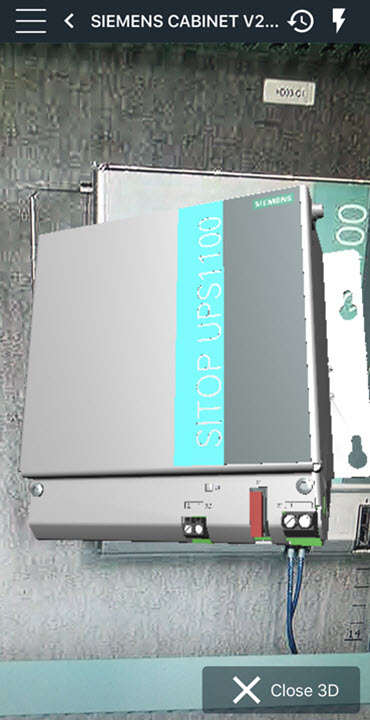
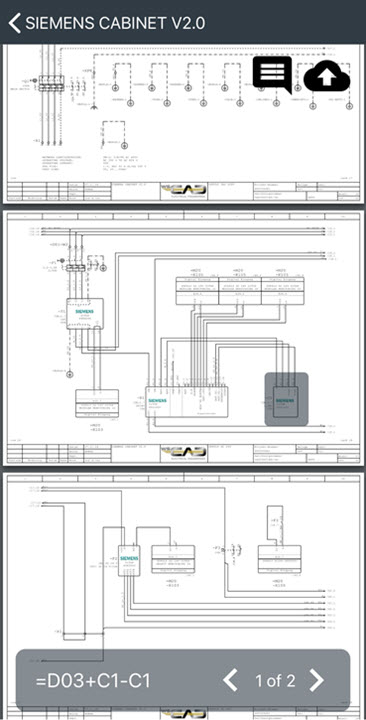
![]()
If you want to display the component in the schematic, click on the PDF symbol button in the information area. The corresponding schematic page of the PDF file is opened and the component is marked. Within the PDF file you can scroll between the pages.
![]()
With the Comment symbol button in the upper right corner you can insert notes for the components.
![]()
You can then use the Cloud symbol button to transfer your changes to the PDF file back to the cloud storage.
Processing wiring information
![]()
With this symbol button you can open the wiring list of the project and display the current status and the information about the connections between the components. In addition, you can “check off” the connections (wires) that you have just wired locally in the control cabinet in the list. Each connection (wire) is a separate row.
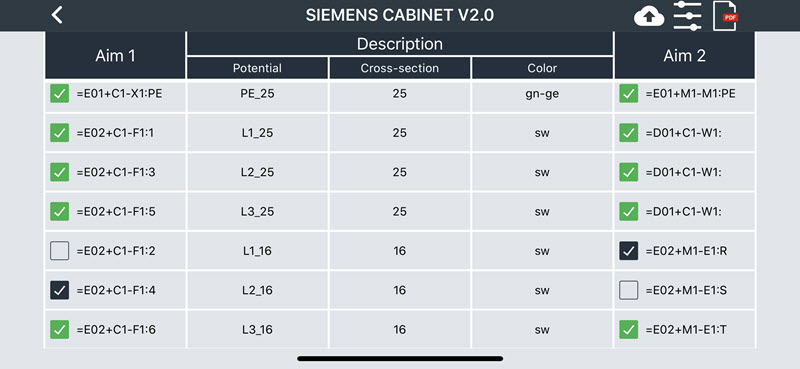
The following are displayed in landscape format:
- Aim 1 (source)
- Aim 2
- Potential
- Wire cross-section
- Wire color code
Potential, wire cross-section and wire color code can be set in the WSCAD SUITE via the connection attributes.
![]()
You can use the Show/Hide symbol button in the navigation bar to show or hide the wiring that has already been connected.
![]()
With the Cloud symbol button you load the changes to your project back into the cloud storage.
![]()
In addition, you can export the edited wiring list to the cloud storage as a PDF file using the PDF symbol button.
Before the first start
Downloading Cabinet AR App from the App-Store
![]() First, you will need to download the Cabinet AR App from the Apple Store (for iOS) or the Google Play Store (for Android) to your mobile device (smartphone or tablet).
First, you will need to download the Cabinet AR App from the Apple Store (for iOS) or the Google Play Store (for Android) to your mobile device (smartphone or tablet).
Setting up cloud storage
For the iOS operating system, you need an account with a cloud provider (e.g., Dropbox, OneDrive or Google Drive) that provides you with cloud storage.
To do this, install the cloud software on the PC running WSCAD and register with the provider. Then install the cloud provider’s app on your mobile device.
The connection to the cloud provider is entered in the Cabinet AR App.
Note: Under Android, you can also copy the project files via a USB connection into a freely definable folder on your mobile device. In that case, you do not need a cloud provider.
Transferring projects to the mobile device
In the WSCAD SUITE you export the component information of the opened project into a wsAR file via the menu command Project | Export | Cabinet AR. You can then store this file either locally or directly in a cloud storage.
To be able to store the file directly in a cloud storage folder, you will need to have registered with a cloud provider.
The file additionally includes a PDF file with all the schematic pages, the wiring list, and optionally even the 3D models, if desired.
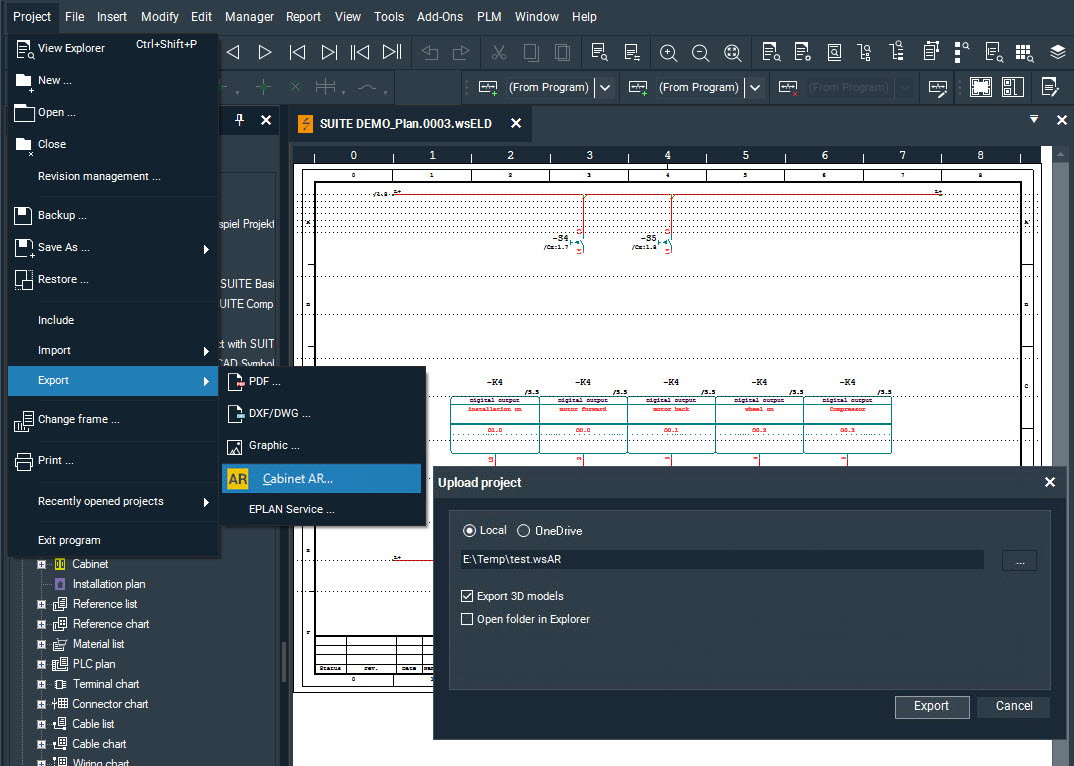
If you saved the file locally, you must then copy the file to the cloud storage. Under Android, you can also save the file via a USB connection in a folder on your mobile device.
Settings

When you start the Cabinet AR App for the first time, you must log in to the cloud provider and download the required projects from the cloud storage to your mobile device.
In the settings of the App, select the cloud provider. Even if you are logged on to several providers at the same time, the connection will always be made only to the selected provider.
If needed, you can log out of the old provider before changing providers via Cloud logout.
Creating WSCAD QR codes
In the WSCAD SUITE, you can generate and print the WSCAD QR codes for the parts via the label output. You can select and edit predefined label settings or define your own label settings. For the output of labels to a printer, you can define label information and a label template for the WSCAD QR codes and save them as a label setting.

You can print the WSCAD QR codes via Report | Labels | QR Codes.
Details on creating QR code labels can be found in the online help under Reporting | Labels or in the “Creating labels” blog.
I hope, this article has helped you. You can download it free of charge.
[button color=”extra-color-3″ hover_text_color_override=”#fff” size=”medium” url=”https://blog.wscad.com/wp-content/uploads/2019/12/Cabinet_AR_Blog_EN.pdf” text=”PDF Download” color_override=”” image=”fa-play”]

Thomas Janowicz, Technical Writer
Documentation Management
